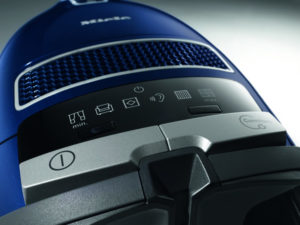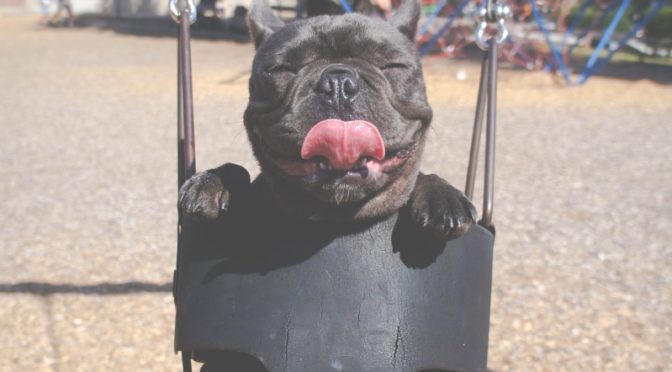
If you or someone you love suffers from allergies–whether to pollen, grass, trees, pets, or simply dust–you probably know what a difference a clean home can make. We’re of the opinion that a good vacuum with HEPA filtering can dramatically increase the quality of the air you’re breathing indoors. Today we’re going to look at the Miele Complete C3 Marin and how well it does when it comes to managing allergies. We’ve reviewed it here and here and see it as one of the best vacuums on the market overall. The good news is that it’s also pretty darn good at allergy control. These are a collection of our experiences and experiences of other Marin owners with allergies.
How effective is the Marin at managing cat and dog allergies?

The Marin does well with cat and dog allergens; the HEPA filter, of course, is an essential part of its effectiveness. While it’s possible to just use it with a cheap air filter, such as the ones that naturally come in the Miele GN Airclean 3D Efficiency Dust Bag, we’d highly recommend continuing to use the replacement Miele HEPA AirClean SF-HA 50 when the original HEPA filter supplied with the Marin loses effectiveness (at around 50 hours of vacuuming).
The combination of the bags and filters keep the allergens within the canister instead of blowing them about in the air while you vacuum, which is the case with most vacuums without HEPA filtration and sealed systems. This is reason enough to buy the Marin (or any of the Complete C3s) over any other vacuum, canister or upright, currently available.
How does the Marin fare with pollen (tree and grass) and mold?
While your results will naturally vary with the local intensity of pollen, as well as from season to season, if you’re like most people, you’re going to notice a dramatic drop in your indoor allergy symptoms and a sharp increase in the quality of your indoor air. Many people have noted being able to stand directly over the vacuum’s exhaust without sneezing, which is as strong a testament as any to the filtering capabilities of the Marin. It simply keeps allergens inside it once they’re vacuumed up until you consciously decide to throw them out with dust bags and changed motor and HEPA filters.
How well does the Marin manage dust mite allergens?
Everything we’ve seen and read indicates the Marin can make a significant difference in managing dust mites. Remember that most dust at home is composed of dead skin cells and dust mites that feed on them; the more you vacuum, the more you’ll reduce the quantity of dust and mites in your home, which should result in a reduction of dust allergies. Also keep in mind that while it’s possible to simply change the HEPA filter with every four dust bag changes, each time the dust bag fills up, it’ll put more stress on the filter, filling it with particles. As a result, the most effective way to manage allergy symptoms while vacuuming with the Marin is probably to change both the dust bag and HEPA filter at the same time. It’ll cost a bit more money, but if it results in fewer symptoms, the increase in quality of life will likely be worth it.
I have asthma. Will the Marin help manage my symptoms?
It’s not a magic wand, but you might notice a decrease in your asthma with regular vacuuming with the Marin, at least if your asthma is triggered by allergens within your home that can be trapped by the HEPA filter. You’ll want to remember to keep up with bag changes; as the dust bags become full, they’ll become more likely to let allergens back out while vacuuming, even though, being a sealed system, this will be kept to a minimum. Also remember that the HEPA filter will need to be changed, on average, after 12 months of vacuuming. The indicator on the filter is the most accurate guide to when it needs to be changed.
Is it a good idea to invest in an air purifier along with the Marin?
Yes. Although the Marin is one of the best vacuums out there for families with allergies, it isn’t a magic wand, and it’s not going to completely rid any home of allergies. A good air purifier will add to HEPA filtration and clear out additional allergens floating around your home. We recommend the Oreck AirInstinct 200 HEPA Large Room Air Purifier if you can afford it; we reviewed it and found it to be one of the best purifiers available that didn’t cost an arm and a leg.
![]() You can buy the Complete C3 Marin here on Amazon. You can buy replacement HEPA filters here. You can buy the Oreck AirInstinct here.
You can buy the Complete C3 Marin here on Amazon. You can buy replacement HEPA filters here. You can buy the Oreck AirInstinct here.
![]() Canadians can buy the Miele C3 Marin here, replacement HEPA filters here, and the Oreck AirInstinct here.
Canadians can buy the Miele C3 Marin here, replacement HEPA filters here, and the Oreck AirInstinct here.
 If you find our research on PMC helpful, you can follow our efforts to keep maniacally reviewing home cleaning tools by shopping through our links above. We promise to keep fighting the good fight against every horror children, animals, and grown, yet messy humans can inflict upon a clean home.
If you find our research on PMC helpful, you can follow our efforts to keep maniacally reviewing home cleaning tools by shopping through our links above. We promise to keep fighting the good fight against every horror children, animals, and grown, yet messy humans can inflict upon a clean home.

